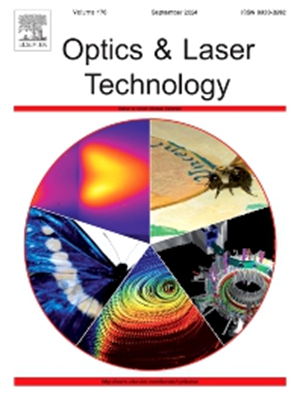Demosaicking customized diffusion model for snapshot polarization imaging
IF 5
2区 物理与天体物理
Q1 OPTICS
引用次数: 0
Abstract
For snapshot polarization imaging, the color polarization demosaicking is essential to reconstruct full resolution from a mosaic array, which is the latest unsolved issue. Due to the mosaic array missing a large number of key pixels, existing one-step deep learning-based methods exhibit limited demosaicking performance. Hence, we make the first attempt to address the color polarization demosaicking task through the diffusion model, namely DCPM. Specifically, we extend the residual-based diffusion process to the task of color polarization demosaicking and improve the network architecture to accommodate full-resolution polarization images. Moreover, considering the polarization property of images, a customized loss function is proposed to assist in the diffusion model training. Extensive experiments on both synthetic and real-world benchmarks demonstrate the effectiveness of the proposed method. The source code will be available at https://github.com/JJGNB/DCPM.
快照偏振成像去马赛克自定义扩散模型
对于快照偏振成像,彩色偏振去马赛克是实现拼接阵列全分辨率成像的关键,也是目前尚未解决的问题。由于拼接数组缺少大量的关键像素,现有的基于一步深度学习的去拼接方法表现出有限的性能。因此,我们首次尝试通过扩散模型,即DCPM来解决颜色偏振去马赛克任务。具体而言,我们将基于残差的扩散过程扩展到彩色偏振去马赛克任务,并改进网络结构以适应全分辨率偏振图像。此外,考虑到图像的偏振特性,提出了自定义损失函数来辅助扩散模型的训练。在合成基准和实际基准上的大量实验证明了所提出方法的有效性。源代码可从https://github.com/JJGNB/DCPM获得。
本文章由计算机程序翻译,如有差异,请以英文原文为准。
求助全文
约1分钟内获得全文
求助全文
来源期刊
CiteScore
8.50
自引率
10.00%
发文量
1060
审稿时长
3.4 months
期刊介绍:
Optics & Laser Technology aims to provide a vehicle for the publication of a broad range of high quality research and review papers in those fields of scientific and engineering research appertaining to the development and application of the technology of optics and lasers. Papers describing original work in these areas are submitted to rigorous refereeing prior to acceptance for publication.
The scope of Optics & Laser Technology encompasses, but is not restricted to, the following areas:
•development in all types of lasers
•developments in optoelectronic devices and photonics
•developments in new photonics and optical concepts
•developments in conventional optics, optical instruments and components
•techniques of optical metrology, including interferometry and optical fibre sensors
•LIDAR and other non-contact optical measurement techniques, including optical methods in heat and fluid flow
•applications of lasers to materials processing, optical NDT display (including holography) and optical communication
•research and development in the field of laser safety including studies of hazards resulting from the applications of lasers (laser safety, hazards of laser fume)
•developments in optical computing and optical information processing
•developments in new optical materials
•developments in new optical characterization methods and techniques
•developments in quantum optics
•developments in light assisted micro and nanofabrication methods and techniques
•developments in nanophotonics and biophotonics
•developments in imaging processing and systems

 求助内容:
求助内容: 应助结果提醒方式:
应助结果提醒方式:


